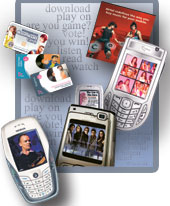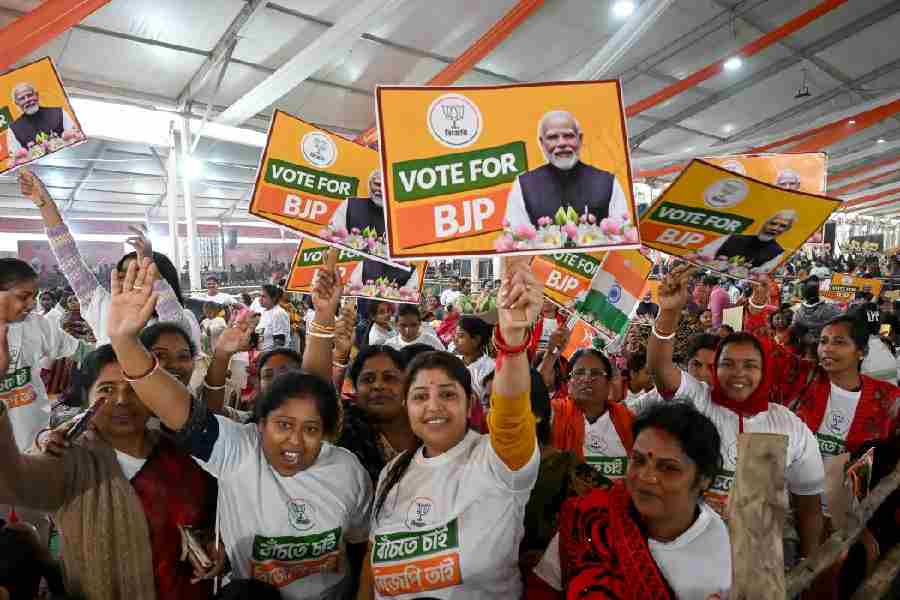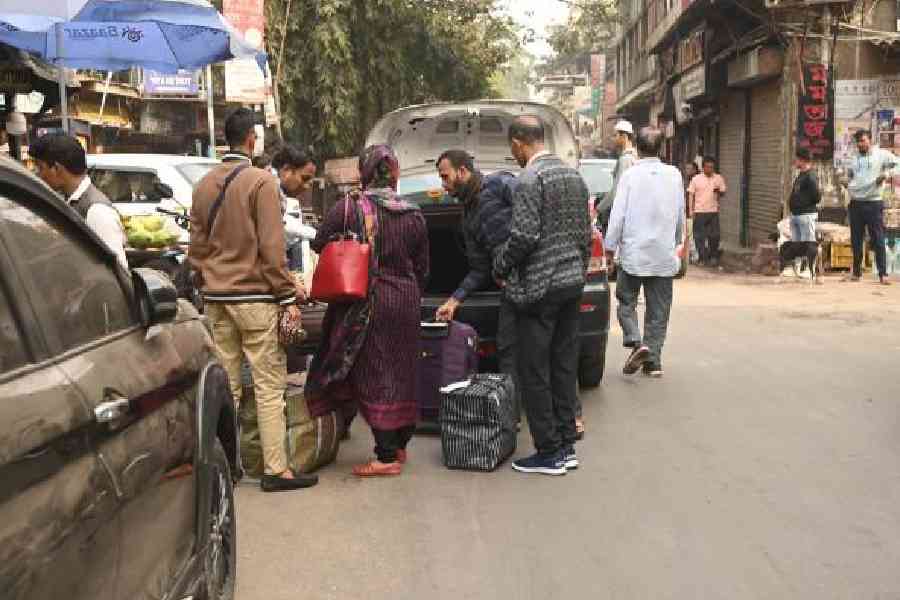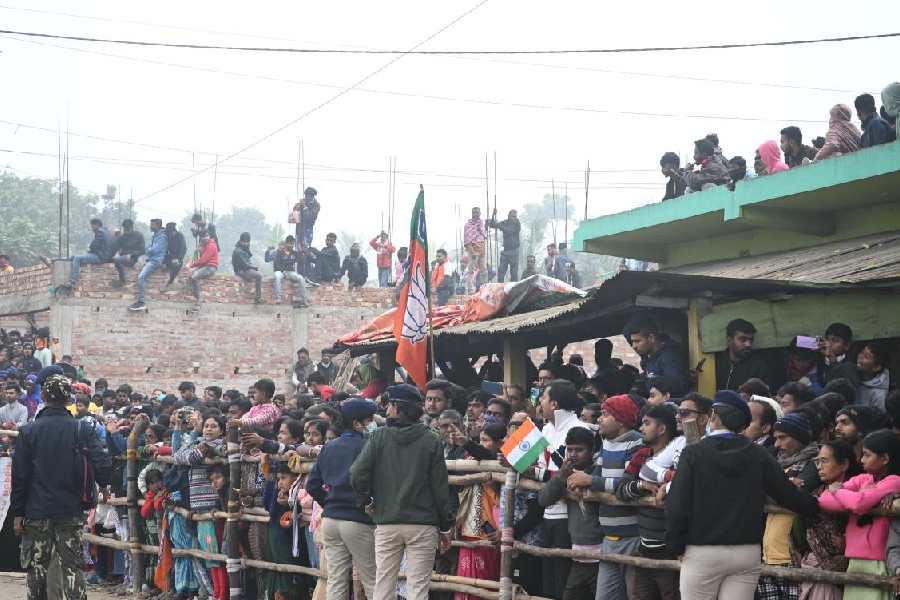 |
So your mobile phone croons the opening bars of Kabhi Alvida Naa Kehna (KANK) every time it rings. Let’s get one thing straight: that’s kidstuff. On the other hand, you might be cucumber cool if you’ve downloaded the full song or if you are watching its music video on your mobile screen. Or how about watching the news channel on your phone? Or doing a web search?
The good old ringtone and SMS may still dominate mobile value-added services (VAS) in India, but there’s clearly more to mobile content than such vanilla fare. Would you like to watch short clips of the Miss World Contest this September? Or, more sophisticated fare? Yes, it’s all happening in the mobile content space. Says Mahesh Prasad, president, applications solution and content group, Reliance Infocomm, “The mobile is an anytime-anywhere device today and users are looking to do more than voice communication.”
Adds Sanjay Kapoor, joint president (mobility), Bharti Airtel, “Mobile content consumption has turned the corner in the Indian market.”
It’s not hard to understand why operators are pushing mobile content. India now has 105 million mobile subscribers and over 5 million new subscribers are signing up each month. But they are spending less on their phones, so the mobile companies need to persuade them to use more sophisticated — and costlier — services.
Airtel’s Kapoor estimates that the mobile content market has grown by 200 per cent over the last 18 months, and will double this year. Adds Pankaj Sethi, vice-president, value-added services, Tata Teleservices, “The pace at which customers are adopting content is accelerating rapidly.”
Improving handset and network capabilities are pushing content usage. Says Subho Ray, president, Internet & Mobile Association of India, “It helps that handset costs are becoming more affordable.”
The result is a range of new services and content:
 |
 |
| Mahesh Prasad of Reliance Infocomm; (top) Sanjay Kapoor of Bharti Airtel |
Visual radio
Last month, Hutch launched visual radio with Radio Mirchi in Delhi. So a Hutch subscriber there can tune into the RJ-chatter-and-song while receiving synchronised graphics on the mobile screen through the GPRS network.
“It allows for interactivity,” says Naveen Chopra, chief marketing officer, Hutchison Essar. The idea is to spur content usage so that if you hear a song, you may be tempted to download its ringtone or even participate in a radio contest. But there is the 10 paise per kb charge for downloading the visual content plus content purchase costs. Now, Hutch plans to launch visual radio in Mumbai next month.
Full song downloads
A few months ago, Hutch and Airtel also launched full song downloads. So if you aren’t carrying your iPod, you can listen to that KANK song on your phone and even watch its music video — on offer from Airtel — if you are so inclined.
“We felt that customers were ready to consume full music and videos on their mobiles. The environment too was conducive with iPods becoming more popular and more phones being introduced with richer sound capabilities,” says Kapoor.
Only GPRS subscribers can download songs from their WAP portal for now. Airtel charges Rs 20 for a full song and Rs 30 for a music video download. Hutch charges Rs 20-Rs 30 for a full song. Plus there is data download charge of another Rs 5-Rs 6.
Actually, music is one of the biggest drivers of mobile content in India. After all, look at the ringtone business. According to the Cellular Operators Association of India, around 1 million ringtones and caller-back tones were downloaded a day as of December 2005, with a monthly growth rate of 20-25 per cent.
Full song downloads are nowhere near those numbers yet. But says Airtel’s Kapoor, “The initial response is very encouraging.” Airtel’s full songs can be played on about 50 handsets on the market that cost Rs 8,000 and above.
Hutch too is hoping to expand the service. Its full songs can only be downloaded on eight or nine high-end Nokia phones costing over Rs 15,000 today. But by next month, it hopes to increase that to 60-65 Java-enabled handsets. That’s about 10-15 per cent of the roughly 100 million handsets being used. “That’s a pretty big market,” says Chopra.
 |
 |
 |
| (From top): Arun Gupta of Mauj Telecom; Pankaj Sethi of Tata Teleservices; Naveen Chopra of Hutchison Essar |
Video downloads
If music is huge, operators are betting on video as the next big thing. Says digital media consultant Mahendra Swarup, “The next inflection point for mobile content will be video streaming.”
True, this might only happen once the more sophisticated third-generation or 3G networks that support ‘rich’ media are rolled out in India. That’s because the existing 2.5G-2.7G networks are not built for streaming video. So the current user experience is not great.
The government has been going slow so 3G is probably still a year away. But that’s not stopping operators, even if video adoption rates are still low. “Users don’t always wait for the ideal situation to adopt new technology,” says Mandar Thakur, general manager, Soundbuzz India, the content provider that runs Airtel’s full song service.
So Reliance Infocomm and Hutch have had video content for several years. Hutch even introduced video ringtones last year and Reliance may launch them soon.
Similarly, Tata Indicom, which had 30-second video downloads, introduced full music video streaming of upto four minutes recently, which is accessible on mid-end CDMA phones costing Rs 8,000 -Rs 10,000. Soon it will also launch music video downloads.
Says Sethi, “I see video as a good way forward. People will take it up in a snacking kind of way.” That’s because users are unlikely to stare at the tiny screen for long, preferring short-form content.
Reliance Infocomm gets around 1 million to 1.5-million video downloads a month today, a 30 per cent increase over last year. This includes 55-90-second video clips, at Rs 10, and video streaming, which costs Rs 15 a session (video downloads are on your own phone, while video streaming content is on the operators’ server).
Video content is available to Reliance Mobile World (called R World earlier) subscribers but non-subscribers can buy a day pass for Rs 3. Out of Reliance’s 19 million CDMA subscribers, over 11 million have R World capability on their handsets although subscribers are lower at 7.5-8.0 million.
Sports and movies are big draws on the video. So R World subscribers devoured clips of the winning goals of the Fifa World Cup matches recently and even the Wimbledon matches.
Mobile TV
Then, there’s mobile TV. Of course, true mobile TV — broadcast of live channels through the digital video broadcast-handheld (DVB-H) standard — is some time away as it’s still being tested abroad. But news highlights and even clips from TV serials are available.
Reliance even has live TV on the mobile through what it calls “uni-casts”. In fact, Times Now went live on R World before it went on air. Unlike a broadcast, where a receiver in the cellphone catches a TV signal, once an R World subscriber selects a channel and requests it, it is uni-cast to him/her. Only high-end phones have streaming capability.
Both Airtel and Reliance have tied-up with Walt Disney and are also offering 30-second made-for-mobile shorts or ‘mobisodes’ of series like Mickey in Space.
Varied content
Would you like to watch the Miss World beauties as they stride onto stage (with a 10-minute lag)? Or would you like to turn them into swimsuit wallpapers? There’s a range of new content also coming and it ranges from religious discourses to ‘static’ content like comics. Content providers like Coruscant Tec and Mauj have introduced comic strips like Uncle Pai and Popeye respectively. And now players like Mauj are even acquiring mobile rights for international events.
Mauj recently won the global mobile content rights for the Miss World event in September, which it will distribute to 200 countries. “Indian content providers are coming of age,” says Arun Gupta, managing director, Mauj Telecom.
Distribution — the new frontier
Is the mobile content explosion limited to high-end customers? Not really. Rather, operators are targeting both ends of the market. “India is the only country to see this kind of growth from the tail-end to high-end,” says Soundbuzz’s Thakur.
To ensure that there’s a demand for these services, operators are trying to push GPRS penetration by reducing access charges. And, since most new subscribers are from B and C class towns, they are trying to educate them on the benefits of more than just voice services.
Says Tata Indicom’s Sethi, “The biggest challenge will be to make content available at the lower end. Our endeavour is to push games, video and audio to as low a spectrum as we can go.” Of Tata Indicom’s 6 million mobile customers, only one million handsets are capable of premium VAS.
Now, Tata Indicom has made ringtones, wallpapers and games available even on phones that cost less than Rs 3,000. More importantly, Sethi is adopting the ‘sachet strategy’ that has helped soaps-and-shampoo makers to boost sales. So high-end users may spend Rs 100 to play Spiderman. But even low-value consumers can get three tries at a game for say, just Rs 5. Many operators are betting on gaming as a big content driver.
Operators are also using the retail route to push content. Airtel has introduced 100,000 Easy Music outlets, where subscribers can buy monotone and caller-back ringtones over the counter. Hutch too has launched Fun cards with pre-selected monotones and caller-back tunes.
Besides, content provider Soundbuzz will launch music download cards in retail outlets shortly that can be used with all operators. “Our endeavour is make it easy for the customer. So we’re tapping the retail sector,” says Thakur. The scratch card can be used to download music from the Internet or the mobile operator’s WAP site. For non-GPRS customers, the dealer can physically download the song.
Applications & transactions
Then, of course, the players are also heavily pushing applications like e-mail, instant messenger, and even transactions like railway bookings and exam results. For instance, Reliance subscribers were able to access the results of over 90 exams this year from Class 10 to engineering entrance exams. “Data usage is going up every single month,” says Hutch’s Chopra.
Or take Yahoo! India. It tied up with Nokia recently to launch Yahoo! Go Services on select Nokia phones so users get automatic access to Yahoo mail, messenger and even search. “Worldwide search has been a big mobile application. In India too, we are putting a lot of investments behind search,” says Yahoo! India’s managing director George Zacharias.
Besides, content operators like Coruscant Tec are hoping to open up mobile-commerce. Coruscant’s subsidiary PayMate India launched an SMS-based mobile payment solution with Citibank recently. Says Ajay Adiseshann, managing director, PayMate, “We’re witnessing the birth of m-commerce.”
There are, inevitably, hurdles to growing the content market, one of the biggest being spectrum availability and the fact that 3G hasn’t been launched yet. Also, content providers feel the low revenue share given by operators hinders investments in new content. Even so, there’s no getting away from the fact that Indian mobile phone subscribers are doing more than just talking on the phone.
Photographs of Pankaj Sethi, Mahesh Prasad and Arun Gupta by Gajanan Dudhalkar










